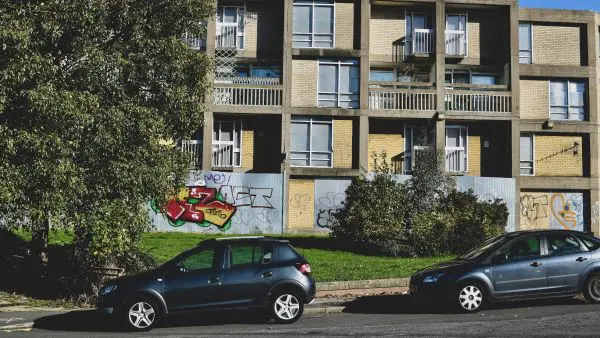Why are buildings being sold for £1?
Posted on: 2 September, 2024

More and more buildings are being sold for loose change across the world, but is this an anomaly or a sign of things to come?
Anyone who has been following the housing market over the last year few years will know that the market has been fluctuating significantly. Thanks to high inflation and escalating mortgage rates, hopes of an uplift across the market have yet to be realised. However, it may be a surprise to hear that, in the UK and across parts of Europe, the price of some buildings and houses have fallen dramatically. In fact, some properties are available for as little as £1/€1.
A house or a building might not be the first thing you think of spending your money on when you find a spare £1 coin in your wallet or down the sofa, but it’s becoming increasingly common. Here’s why.
The £42 million pound tower block sold for £1
The Mill, a 23-storey tower block in Ipswich, recently made headlines for being sold to its new owner for a paltry £1. This mixed-use development, completed in 2009, cost £42 million and was championed as a ‘landmark’ building for the city. However, in 2013, parts of its polystyrene tile cladding were damaged by gale force winds.
The damage was so severe that residents of The Mill were told by fire experts that the building was unsafe. Over a decade later, residents are still unable to leave the complex, with the condition of the cladding effectively rendering their apartments ‘worthless’. A report into the damage of the building found that the cost to repair The Mill’s cladding could exceed £30 million, with demolition touted as a possibility if the costs could not be justified.
Learn more: A guide to master leasing: the pros and cons you need to know
In July, the property was sold to local developer John Howard, and with plans to renovate and remediate The Mill underway, residents may finally be able to leave and sell their properties for acceptable sums. The Mill is an interesting phenomenon in property – comparable to a car being written-off due to the cost of repairs almost outweighing the value of the asset itself. However, it’s far from the only property that’s been sold for £1 in recent years.
Liverpool, Italy and the €1 house scheme
In 2015, the ‘Homes for a Pound’ scheme was launched by Liverpool’s City Council. Documented by Channel 4’s documentary series ‘The £1 Houses: Britain’s Cheapest Street’, 138 houses have been part of the scheme and, yes, they’ve all been sold for just £1.
As the series reveals, though, buying a house for loose change isn’t quite as simple as it sounds. Like The Mill, these houses were in far from safe condition. The properties on Webster Triangle were derelict, dilapidated, and in serious need of repair. Buying the house also came with certain conditions – essentially, buyers had to be able to prove to the council that they’d be able to develop them into proper homes.
Learn more: What is the BRRRR method (and how does it work)?
While the homeowners involved in the Liverpool scheme have faced legal issues and ultimately been completed behind schedule, it has inspired similar efforts – both in the United Kingdom and across Europe. Last year, 100 houses in the Marches Estate of Wolverhampton were made available for just £1. These properties are the polar opposite of the derelict houses of the Liverpool scheme, being newly built and ready to be lived in, aside from decoration. The difference with this scheme is that people build up a loyalty premium through monthly payments. After 20 years, this can either be claimed back in cash or used as a deposit.
Meanwhile in Europe, a potentially even more glamorous option is available for buyers for just €1 (0.85p) – an Italian villa. Thanks to the migration of younger generations to cities, Italy’s remote villages are becoming abandoned, with just the country’s elderly population left to inhabit it. In an effort to keep these villages and houses afloat, they’re being offered for miniscule sums, with the view that having the house (and subsequently the village) occupied is worth more than their value.
Learn more: A guide to master leasing: the pros and cons you need to know
However, as with the Liverpool Homes for a Pound scheme, the catch with these Italian villas is the condition buyers will find them in. Many of them need serious work before they’re habitable, yet the costs of the repairs needed are reportedly far lower than what would be expected in other countries.
Will we see more houses and buildings sold for £1 in the future?
It’s bizarre to think that a house or even an entire apartment block could be sold for such a low sum, but with the state of the global economy and the condition of the housing market, it’s likely to become more common across the world.
China’s ghost cities and developments are one potential example to watch, where the speed of development has outpaced the growth of a struggling economy, leaving dozens of apartments vacant and haemorrhaging money. Yet rather purely being viewed as a commercial oddity in the housing and property market, the £1 model could be an effective way to provide housing, preserve culture and avoid needless development that will cause further environmental damage.





